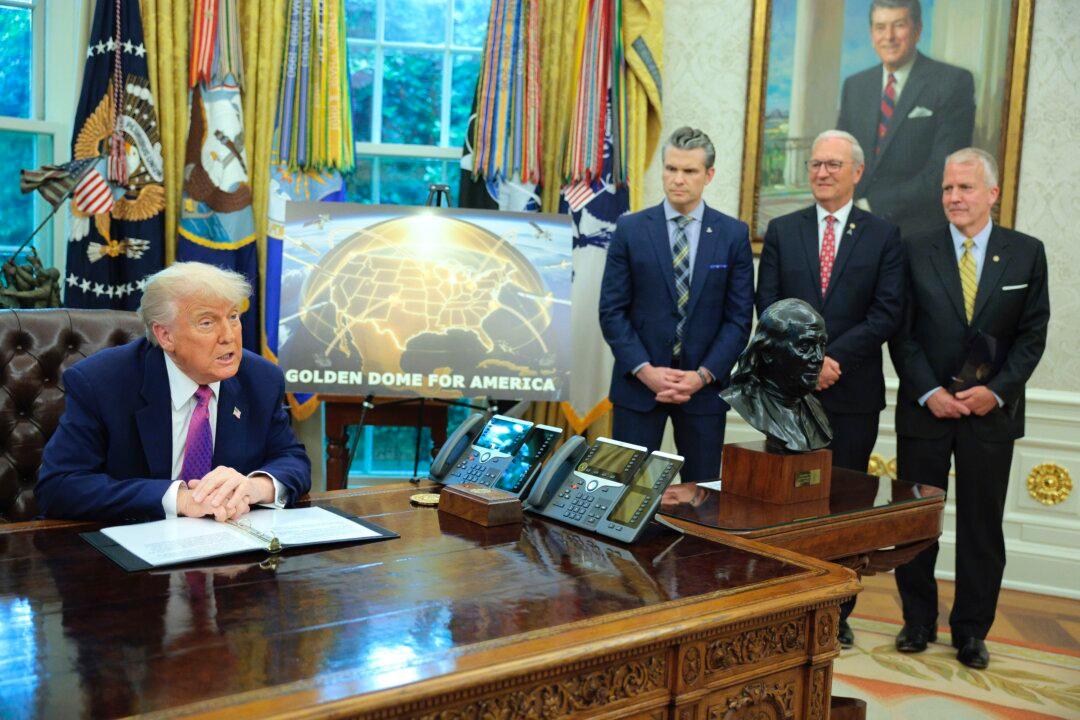News Analysis
Ottawa effectively removed some tariffs on the United States during the election campaign, and while the Conservatives have charged that the move was done “quietly,” the Liberals counter that it was public and that many tariffs remain in place.
The controversy on the issue was driven in recent days by a report by Oxford Economics,
covered by Bloomberg News, which suggested that Canada’s tariffs against the United States are currently near zero. The report said tariffs only remain on products like orange juice, alcohol, coffee, clothing, and cosmetics.
This was picked up as a point of
criticism by the
Conservatives, charging that it contradicted the government’s public posturing ahead of the election.
In early March, then-Prime Minister Justin Trudeau vowed that Canada’s tariffs on the United States “will remain in place until the U.S. trade action is withdrawn.” Trudeau made the comments while announcing an incremental $155 billion retaliatory
package against American products in response to the first wave of tariffs from the Trump administration relating to border security and drug trafficking concerns.
Trudeau stepped down days later and was replaced as Liberal leader and prime minister by Mark Carney, who then ran an election campaign focused heavily on countering U.S. President Donald Trump.
Trump imposed three sets of tariffs on Canada, some accompanied by exemptions for items covered by the United States-Mexico-Canada free-trade deal (USMCA), and made repeated calls for Canada to join the United States.
Carney made the “elbows up” hockey analogy a
key slogan of his campaign, warning that Trump wants to “break” Canada so he can “own us.”
“We’re fighting the unjustified American tariffs with counter-tariffs of our own that cause maximum damage in the United States and have a minimum impact here in Canada,” Carney said on the campaign trail on April 22.
But even before calling the election, Carney was giving hints that Canada’s retaliatory response would be limited.
“There is a limit to matching these tariffs dollar for dollar given the fact that our economy is a tenth the size of the United States,” Carney said on March 17 while visiting London, England, just ahead of calling an election on March 23.
‘Quietly Dropped‘’
Canada’s tariffs haven’t been technically dropped, but the Carney government issued two remission orders in mid-April that effectively removed the impact of tariffs on sectors of the Canadian economy including the car industry. After Trump imposed a 25 percent tariff on foreign autos and parts, accompanied by USMCA free-trade exemptions, Canada responded with a similar surtax on U.S.-made autos and parts in April.Tory Leader Pierre Poilievre took to social media to
comment on the Oxford Economics study, saying that while Carney was messaging to keep “elbows up,” in the middle of the election campaign he “quietly dropped retaliatory tariffs to ‘nearly zero’ without telling anyone, knowing it would only become public after the election was over (May 7).”
Finance Minister François-Philippe Champagne responded by saying Poilievre was spreading “falsehoods” on the issue.
“To retaliate against U.S. tariffs, Canada launched largest-ever response — including $60B of tariffs on end-use goods. 70% of those tariffs are still in place,” he
said on social media. “We temporarily and publicly paused tariffs on goods for health & public safety reasons.”
Champagne had issued a
statement on April 15, and also
posted about it on social media, announcing remission measures for the auto sector. He also announced a six-month tariff relief pause on U.S. goods used in Canadian manufacturing, processing and food and beverage packaging, along with goods used in health care, public safety, and defence.
Carney himself had not put emphasis on these measures, but he mentioned them around the time of Champagne’s announcement.
During an April 15 stop in Saint-Eustache, Que., Carney said his government is responding to the United States with “purpose and with overwhelming force.” He later took questions from reporters about whether Canadian counter-tariffs are hurting domestic car manufacturing.
“We can provide incentives for the production to maintain here, which we have, and the announcement of the remission order today will show that clearly,” said Carney.
During the English-language party leaders’ debate on April 17, Carney also took a step back from the tit-for-tat retaliatory approach to U.S. tariffs.
Asked by the moderator whether he still supports dollar-for-dollar tariffs if they ultimately threaten Canadian jobs and businesses, Carney said, “no.”
“And in fact, we’ve already moved off from dollar-for-dollar tariffs,” Carney added, noting how the U.S. economy is 10 times the size of Canada’s.
Conservatives have charged that while he emphasized being tough on the United States during the election campaign, Carney was saying one thing while doing another.
“Mark Carney lied to Canadians about what he said was the most important issue of the election campaign,”
said Tory MP Chris Warkentin in commenting on the matter on social media.
The Tories had not put as much focus on countering Trump during the campaign, leading to some tensions within the Canadian conservative movement. Poilievre has defended running on the issues of affordability and public safety, saying these issues predated Trump’s arrival and will persist without changes in government policy.
This could explain why Conservatives did not call out the potential discrepancy between Carney’s anti-U.S. messaging and his measures removing the impacts of Canadian tariffs on the domestic economy. Conservatives also likely supported providing relief to local workers and businesses.
Remission Orders
Canada’s tariff relief measures were implemented by way of two orders in council issued in mid-April following the recommendations from Champagne.The “United States Surtax Remission Order (Motor Vehicles 2025),”
made on April 15, relates to granting remission to manufacturers of motor vehicles in Canada and importers of vehicles from the United States for sale in Canada.
This order in council states that it came into force on the day it was made, April 15, and that it was registered on May 7, the day it was published in the Canada Gazette. That was the date highlighted by Poilievre as being the date when the regulation became public.
A note in the Gazette
said the objective of the order is to “provide relief from Canada’s auto counter tariffs for domestic auto producers, in recognition of the integrated nature of the North American auto industry, while promoting continued automotive production and investment in Canada.”
The second order in council, a general “United States Surtax Remission Order (2025),” was
made on April 16. It applies to a number of organizations such as those in the medical and pharmaceutical fields, law enforcement agencies including correctional services, firefighting services, the Canadian Armed Forces, and the Canadian Security Intelligence Service. It also applies to U.S. goods used in manufacturing or packaging in Canada.
This order in council also states that it came into force on the day it was made, April 16, but that it was
registered on May 7, which was when it was published in the Canada Gazette.
The regulatory impact analysis statement on the order published in the Gazette said the objective of the remission order is to provide temporary relief to businesses and listed entities as they adjust their supply chains.







